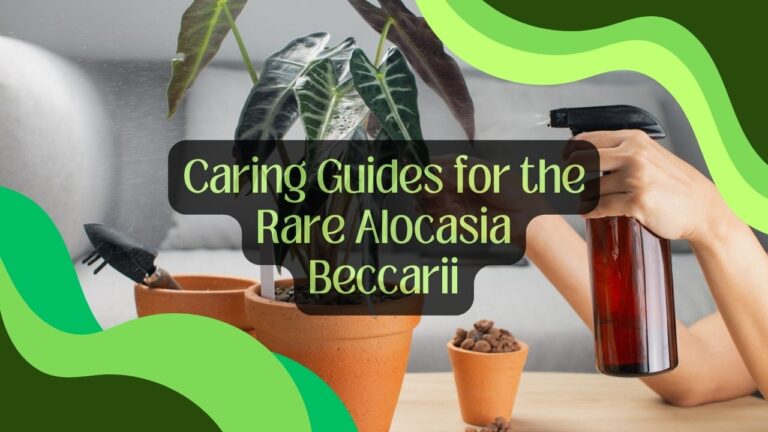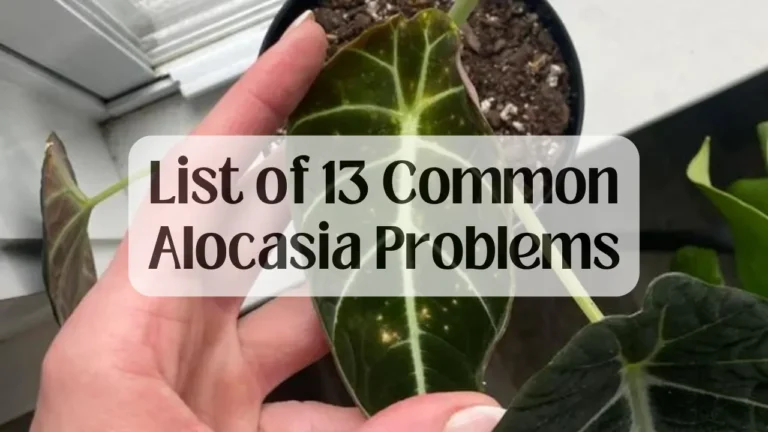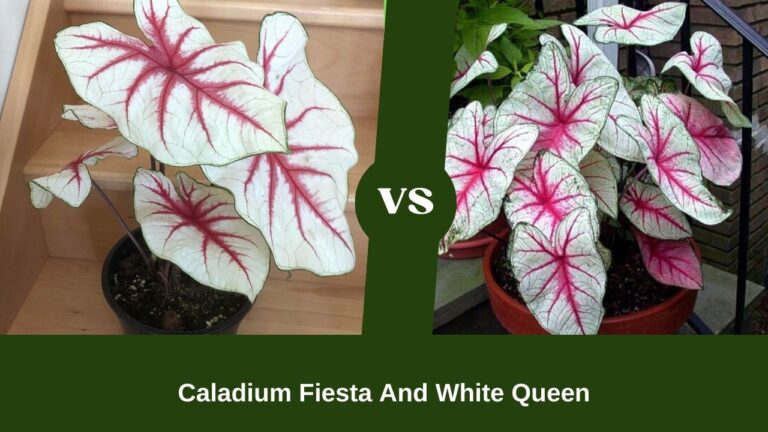Discover the Reasons of Black Spots on Monstera Plants

Monstera plants, with their striking foliage and easy-going nature, are a popular choice among indoor gardeners. However, even these hardy beauties can fall victim to unsightly black spots, causing concern and distress to their owners.
Why there are black spots on Monstera plants? There are a couple of reasons for this. Black spots are a sign of overwatering, underwatering (browning at tips), fungal infection (brown/black spots with bumps), or sunburn (brown/black edges). Also, some other additional reasons cause black spots in leaves.
Fear not, I’ll come up with a detailed guide on identifying the causes, resolving the issue, and preventing future occurrences. Keep on reading!
6 Causes of Black Spots on Monstera Plants

No more fluffy discussion. Let’s get into the main discussion quickly.
Chemical Burns
Fertilizers, while essential for plant growth, can sometimes leave chemical burns on your Monstera’s delicate foliage. Granulated, time-release fertilizers may not dissolve quickly enough, leading to root burns and, consequently, spotting on the leaves.
Solution: Switch to liquid-soluble fertilizers and apply them away from the plant’s vine.
Frostbite
As tropical plants, Monsteras thrive in warm environments and can suffer from frostbite when exposed to cold temperatures. Frostbitten leaves may form black pustules, followed by browning or blackening, and a soggy texture.
Solution: Remove affected leaves and provide a warm, protected environment for your Monstera.
Fungal Infections
Black spots on Monstera leaves can signify the presence of fungal infections, such as sooty mold. These infections often manifest as brown or black spots where fungal spores are developing, and pustules may form as the spores mature.
Solution: Remove affected leaves before pustules burst, and consider using a fungicide.
Infestations
Piercing insects like aphids, fungus gnats, mealybugs, scales, and spider mites can leave behind a sugary residue called honeydew, which encourages fungal growth. As a result, you may notice brown or black spots with yellow halos on the tops of the leaves.
Solution: Use insecticidal soap or neem oil to control pests, and maintain a clean, dry environment.
Physical Injuries And Sunburn
Black spots can also result from physical injuries, such as leaf tears caused by unfurling, wind gusts, or accidental rough handling. Direct, intense sunlight can scorch the leaves of Monsteras, causing brown or black edges and spots.
Solution: Remove damaged parts for aesthetic reasons, but no further action is required. Move the plant away from direct afternoon sunlight, and use sheer curtains or position it in a bright, indirect light location.
Overwatering
Overwatering can lead to brown or black splotches along the margins or center of the leaf, often edged with a yellow halo. These spots may feel mushy to the touch, and the leaves may curl.
Solution: Adjust your watering schedule and ensure proper drainage. Consider repotting in well-draining soil if the issue persists.
Underwatering
Underwatering causes the leaves to turn brown or black at the tips and outside margins, gradually spreading inward. The leaves may feel dry, crispy, and wilted or curled.
Solution: Increase the frequency and amount of water given to your Monstera.
Root Rot
A devastating disease caused by overwatering and often accompanied by fungal or bacterial infections, root rot can initially present symptoms similar to overwatering but progress to resemble underwatering. If the roots appear dark brown or black and emit a foul odor, your Monstera likely has root rot.
Solution: Promptly repot the plant in fresh soil and a clean pot, removing any infected roots and dipping the remaining root structure in a bleach solution.
A Simple Guide for Thriving Monstera Plants
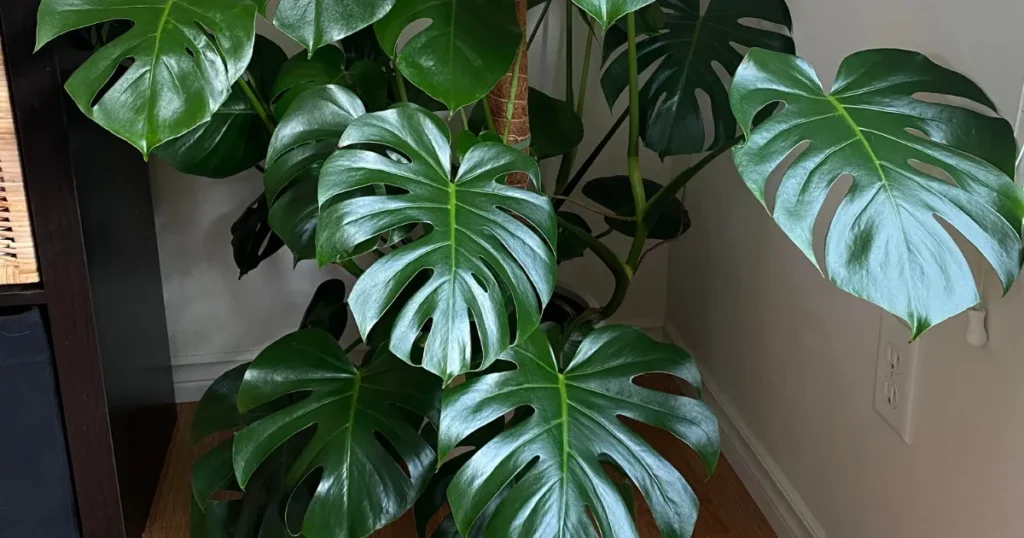
Here’s how to keep your Monstera happy and healthy.
Light and Location
Monstera thrives in bright, indirect sunlight. Avoid the harsh afternoon sun, which can scorch the leaves.
Watering
Aim for a happy medium when it comes to watering. Let the top inch or so of soil dry out before watering again. Overwatering can lead to root rot.
Feeding
Use a diluted liquid fertilizer during the growing season (spring and summer). Apply it away from the plant’s base to avoid damaging the roots.
Temperature and Humidity
Monstera prefers warm temperatures (around 65-80°F) and dislikes sudden drops. Protect it from cold drafts. While average humidity is okay, misting the leaves occasionally can be beneficial.
Pest Prevention
Maintain a clean environment around your Monstera to discourage pests. Regularly inspect your plant for signs of trouble, and address them promptly. A neem oil soak every 2-3 weeks can be a helpful preventative measure.
By following these simple steps, you can ensure your Monstera flourishes for years to come!
Why Should I remove all affected leaves with black spots?
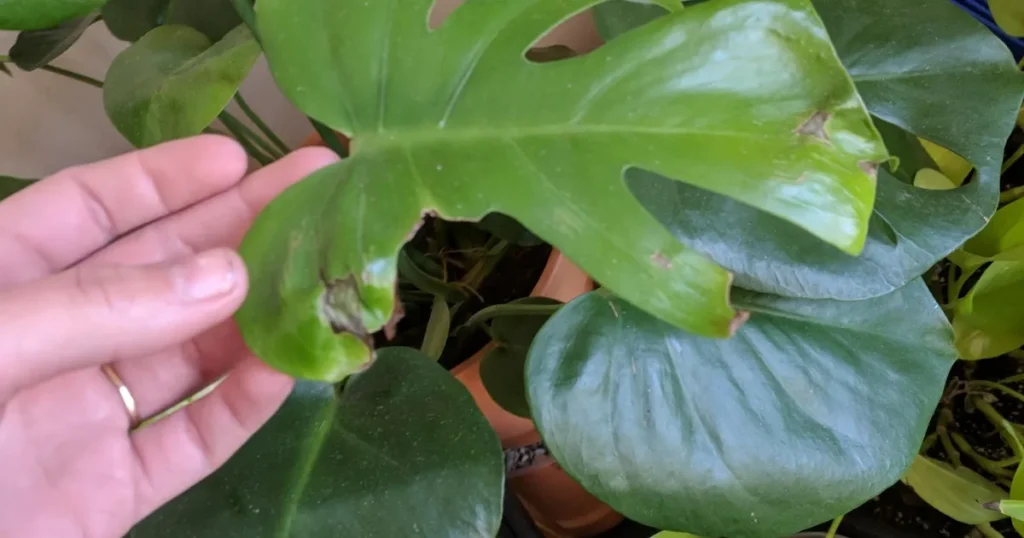
You should remove leaves with black spots if they are caused by a fungal infection. Here’s why.
Stops the Spread
Fungal diseases spread through spores, tiny particles that can travel through the air or water. Removing infected leaves helps prevent these spores from reaching healthy parts of your plant and causing further infection.
Promotes Plant Health
By removing diseased leaves, you allow your plant to focus its energy on healing and growing healthy new foliage. This can improve the overall health and appearance of your plant.
However, if the black spots are minor and you suspect they are from physical injury or sunburn, you may not necessarily need to remove the leaves. Just keep an eye on them to see if they worsen.
FAQs
Have a look at the following Q&A for more insights in this matter.
Q: Should I remove all affected leaves with black spots?
It’s recommended to remove leaves with fungal infections or severe damage to prevent the spread of disease and improve the plant’s appearance. However, minor physical injuries or sunburn may not require leaf removal.
Q: How long does it take for a Monstera to recover from black spots?
Recovery time varies depending on the cause and severity of the issue. With proper care and treatment, your Monstera should bounce back within a few weeks to a couple of months.
Q: Can black spots on Monstera leaves spread to other plants?
Yes, fungal infections and pests can spread from one plant to another, so it’s essential to isolate affected plants and take appropriate measures.
Conclusion
In conclusion, while black spots on your Monstera can be alarming, identifying the cause is key. Fungal infections require prompt action, including removing affected leaves and adjusting your watering habits. For minor injuries or sunburn, cosmetic removal is optional.
Remember, prevention is best! Provide your Monstera with bright, indirect light, proper watering, and a clean environment to minimize future problems.



